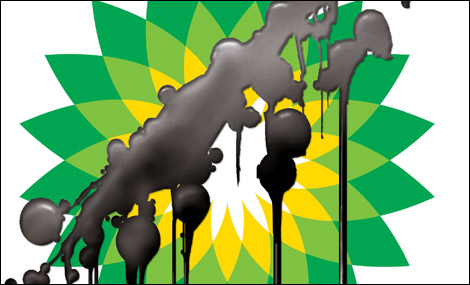he volume of oil pouring into the Gulf of Mexico from the Deepwater Horizon oil rig may be at least 10 times higher than previously estimated, NPR has learned.
The U.S. Coast Guard has estimated that oil was gushing from a broken pipe on the Gulf floor at the rate of 5,000 barrels a day.
But sophisticated scientific analysis of sea floor video made available Wednesday by the oil company BP shows that the true figure is closer to 70,000 barrels a day, NPR’s Richard Harris reports.
That means the oil spilling into the Gulf has already far exceeded the equivalent of the 1989 Exxon Valdez tanker accident in Alaska, which spilled at least 250,000 barrels of oil.
That means the oil spilling into the Gulf has already far exceeded the equivalent of the 1989 Exxon Valdez tanker accident in Alaska, which spilled at least 250,000 barrels of oil.
The analysis was conducted by Steve Werely, an associate professor at Purdue University, using a technique called particle image velocimetry. Harris tells Michele Norris that the method is accurate to about 20 percent. That means the flow could range between 56,000 barrels a day and 84,000 barrels a day.
Another analysis by Eugene Chiang, a professor of astrophysics at the University of California Berkeley, calculated the rate of flow to be between 20,000 barrels a day and 100,000 barrels a day — both higher than the Coast Guard’s estimate.
But the pipe is spewing both oil and gas and the BP does not make it clear how much is oil and how much gas.
“BP has always said there is no way to measure the amount spilling from the pipe,” Harris said.
But, he said, the uncertainty could be reduced if BP would share more information with the scientists. (via)
That’s an Exxon Valdez every four days… Holy shit.

Several different velocimetry techniques are used at Idaho National Laboratory’s MIR Lab, including Laser Doppler velocimetry (LDV), particle image velocimetry (PIV) and stereoscopic PIV. Learn more about the world’s largest flow facility here.
http://www.inl.gov/velocimetry